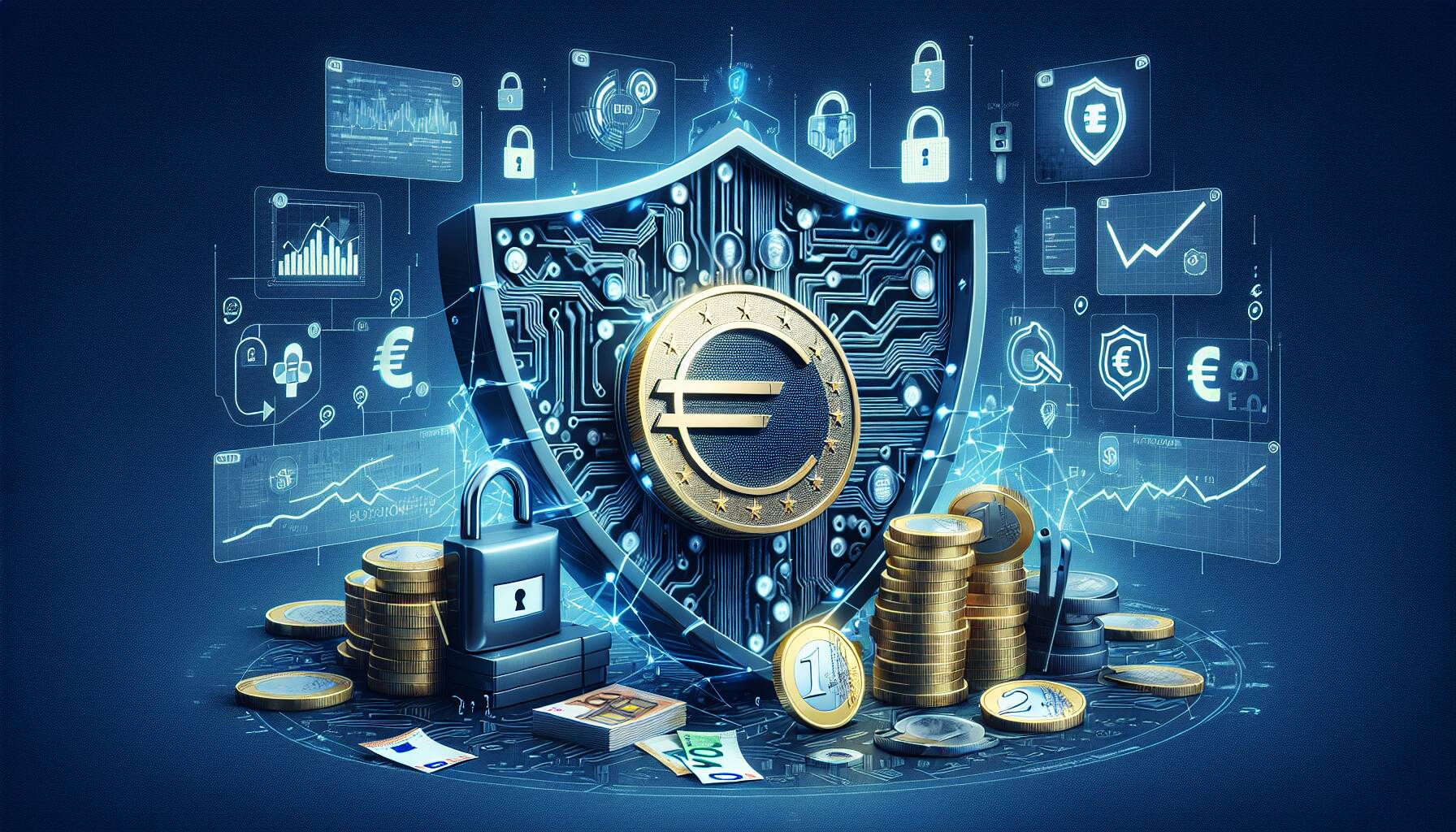A digital euro could become an essential tool for ensuring seamless payments during critical outages, as highlighted by European Central Bank (ECB) board member Piero Cipollone. Speaking at the European Parliament in Brussels, Cipollone emphasized that a Eurozone central bank digital currency (CBDC) would enhance business continuity in the event of a cyberattack that disrupts banking services.
In a practical scenario, if a cyberattack were to cause an outage of a bank’s app, customers could still access their banking services via the ECB’s digital euro app, provided that the backend systems remained operational. “If a cyberattack caused the outage of a bank’s own app, but the bank’s backend services were still functioning, customers would still be able to access their accounts with that bank through the ECB’s digital euro app,” Cipollone explained.
Moreover, the introduction of an offline-capable digital euro app could serve as a crucial failsafe during power outages, preserving payment processing capabilities when traditional methods fail. Cipollone remarked, “Cash is our only true fallback…but as society increasingly moves away from cash, and as cash itself may be difficult to access in emergencies, we need to complement it with a digital version.”
The ECB is not alone in its exploration of CBDCs, as central banks across the globe investigate the potential benefits of digital currencies. These efforts are partly driven by the growing competition from stablecoins and digital payment solutions like Apple Pay, Google Pay, and PayPal, underscoring the urgency for established financial institutions to innovate and adapt to the evolving digital landscape.

Digital Euro: Ensuring Payment Continuity in Crisis
Key points related to the digital euro and its potential impact:
- Business Continuity During Outages:
A digital euro may allow users to continue transactions even if banks face operational disruptions due to cyberattacks.
- Access to Banking Services:
Customers could access bank accounts through the ECB’s digital euro app if their banking apps are compromised but backend services are functioning.
- Offline Functionality:
An offline-capable digital euro app could provide a means to transact during power outages that disrupt traditional payment systems.
- Reducing Dependence on Cash:
As society moves away from cash reliance, a digital euro could serve as a functional alternative in emergencies where cash access is limited.
- Global Trend towards CBDCs:
The ECB’s exploration of a digital euro aligns with global efforts by central banks to innovate currency in response to competition from stablecoins and digital payment platforms.
Analyzing the Digital Euro: A New Wave of Payment Security
The recent remarks from Piero Cipollone of the European Central Bank highlight a pressing issue in the modern financial landscape—the reliability of payment systems during crises. The prospect of a digital euro not only aims to enhance transaction security but also positions itself strategically against the burgeoning influence of stablecoins and mobile payment platforms like Apple Pay and Google Pay. The competitive edge of this central bank digital currency (CBDC) lies in its dual functionality: ensuring business continuity amid cyber threats and maintaining user access in offline scenarios.
Competitive Advantages: The digital euro proposes an innovative solution to critical concerns over cyber vulnerabilities in traditional banking systems. Its ability to provide an alternative access route for customers during outages makes it an attractive option. This is particularly relevant in a world increasingly dependent on digital transactions. Furthermore, the potential offline capabilities of this digital currency could serve as a vital tool for users during emergencies or power failures, filling a significant gap left by conventional payment methods.
Potential Disadvantages: However, the introduction of a digital euro isn’t without challenges. One key concern lies in user adoption; consumers might be reluctant to shift from traditional cash systems, particularly those who prioritize privacy or lack technological literacy. Additionally, there are regulatory and technical hurdles that the ECB must navigate, which could delay implementation or affect the public confidence necessary for widespread acceptance.
Beneficiaries and Challenges: This innovation could significantly benefit individuals and businesses that rely heavily on digital transactions, providing them a more resilient option during times of crisis. However, it could pose challenges for existing payment processors, as the digital euro might attract users away from their platforms. Consequently, the financial ecosystem could face a transformative shift where traditional banks and payment providers must adapt to remain competitive in a landscape increasingly dominated by central bank innovations.
















